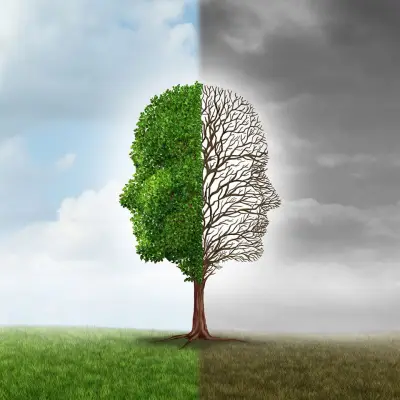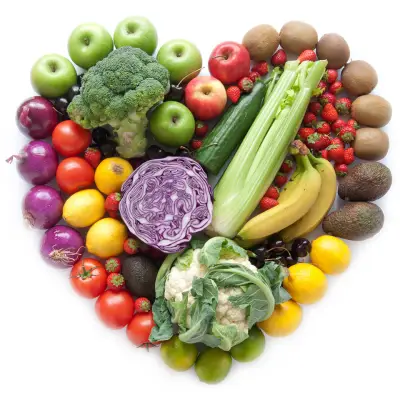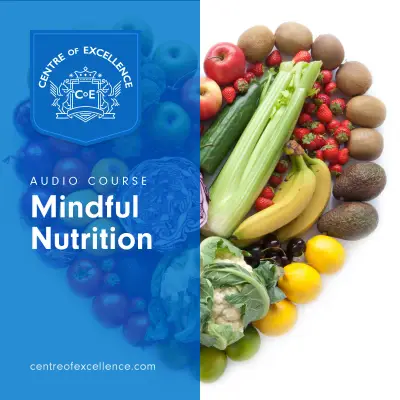Living in tune with your menstrual cycle isn't just about tracking when your period arrives. It's a holistic approach that integrates your body's natural rhythms into every aspect of your life, from the food you eat to how you exercise.
Understanding and aligning with these rhythms can enhance your well-being, mood, and overall health. Let's dive into how to sync your lifestyle with your cycle, making each phase work for you.
Jump to:
- Understanding Your Menstrual Cycle
- The Menstrual Phase: Nourish and Rest
- The Follicular Phase: Energise and Create
- The Ovulatory Phase: Connect and Communicate
- The Luteal Phase: Slow Down and Reflect
- Syncing Your Life With Your Menstrual Cycle
- Embracing Your Cycle as a Strength
- Common Questions Around Living in Tune With Your Cycle
Understanding Your Menstrual Cycle
Your menstrual cycle is a complex, beautiful process that consists of four main phases: menstrual, follicular, ovulatory, and luteal. Each phase has its own hormonal changes, which can affect your energy levels, mood, and nutritional needs. By recognising these phases and how they impact you, you can tailor your diet, exercise, and lifestyle to harmonise with your cycle.
The Menstrual Phase: Nourish and Rest

Days 1 to 5
The menstrual phase, typically lasting from day 1 to 5 of your cycle, marks the beginning of your period. It's a time when your body is going through a natural renewal process, shedding the uterine lining. This phase can often bring about fatigue and a need for extra rest as your body focuses its energy on this internal cleansing process.
During this time, support your body by nourishing it with foods rich in iron and magnesium. Iron is essential because you're losing blood, and with it, iron. This loss can lead to tiredness and weakness if not replenished. Foods like spinach, kale, and other leafy greens, along with lentils, chickpeas, and red meats (for those who include animal products in their diet), are excellent sources of iron. Magnesium, on the other hand, can help ease the cramps and discomfort that often come with menstruation. Incorporating magnesium-rich foods such as pumpkin seeds, almonds, and black beans into your diet can provide relief and comfort.
It's also a time when your body might crave more physical and emotional comfort. Allowing yourself to rest and engage in gentle exercise can be incredibly beneficial. Yoga, especially restorative or yin yoga, can help relax the body and ease menstrual cramps. Short, leisurely walks are an opportunity to connect with nature, which can be soothing during this phase.
Furthermore, staying hydrated is key during the menstrual phase. Drinking plenty of water and herbal teas can help flush toxins from your body, aid digestion, and reduce bloating. Warm beverages can also provide a sense of comfort, helping to reduce menstrual cramps.
Listening to your body is essential during this phase. If you feel the need to slow down, honour that need. It's a time for self-care and nurturing, allowing your body to rest and rejuvenate. By embracing the menstrual phase as a time of rest and nourishment, you support your body's natural processes and prepare for the energetic renewal that follows in the next phases of your cycle.
The Follicular Phase: Energise and Create

Days 6 to 13
As your period ends around day 5, you transition into the follicular phase, typically from day 6 to 13 of your cycle. During this phase, your body undergoes a remarkable shift as estrogen levels begin to rise, leading to increased energy and an uplifted mood. It's a time of renewal and awakening, both physically and emotionally.
A surge in creativity and mental clarity often characterises this phase. You might find yourself brimming with new ideas and a sense of enthusiasm. It's an excellent time for brainstorming, planning, and initiating new projects. Your mind is agile, making it the perfect opportunity to set goals and take action on your aspirations.
Physiologically, your body is also gearing up for more vigorous activities. With rising estrogen levels, your energy capacity expands. This means you're more capable of handling intense workouts and physical challenges. If you've been eyeing that new fitness class or a challenging exercise routine, this is the perfect time to give it a try. Engaging in activities that push your boundaries can be incredibly rewarding during the follicular phase.
Diet plays a significant role in supporting your newfound energy and vitality. Focus on eating follicular phase foods that align with your body's natural increase in energy. Incorporate foods like eggs, which are rich in protein and provide sustained energy throughout the day. With their healthy fats and protein, nuts can keep your energy levels stable. Avocados are another excellent choice, offering healthy fats and vitamins that support your overall well-being.
It's also a good time to explore a variety of fruits and vegetables, as their vibrant colours and fresh flavours can add excitement to your meals. Remember to stay hydrated by drinking plenty of water and herbal teas to support your body's increased activity levels.
The Ovulatory Phase: Connect and Communicate

Days 14 to 16
The ovulatory phase, which typically occurs from day 14 to 16 of your cycle, is a remarkable time when your body is in sync with the cosmos. Estrogen levels peak during this phase, bringing a surge of vitality and sociability. It's as if the world is at your fingertips, and you're ready to connect and communicate easily.
One of the standout features of the ovulatory phase is an enhanced desire for social interactions. You'll feel more outgoing, confident, and eager to engage in conversations. This is an excellent time for important meetings, networking events, or enjoying social gatherings with friends and loved ones. Your communication skills are at their best, making it a favourable period for negotiations and building relationships.
Physically, your body is prepared for more intense workouts and physical challenges. Estrogen enhances your physical performance, so high-intensity workouts, whether a challenging fitness class or an intense cardio session, are well-suited for this phase. It's an opportunity to push your limits and experience the thrill of achieving new fitness goals.
In terms of nutrition, focus on high-fibre foods during the ovulatory phase. Fruits and vegetables, rich in fibre, support your body in processing the extra estrogen circulating in your system. These foods help maintain hormonal balance and reduce the risk of estrogen dominance-related symptoms. Berries, leafy greens, and whole grains are excellent choices for your diet.
Staying hydrated remains essential during this phase, especially when engaging in intense physical activity. Drinking water herbal teas and consuming water-rich fruits like watermelon can help you stay refreshed and energised.
The Luteal Phase: Slow Down and Reflect

Days 17 to 28
The luteal phase, spanning from day 17 to 28 of your cycle, is a time of transition as your body prepares for your upcoming period. This phase can often bring about premenstrual syndrome (PMS) symptoms, primarily due to a drop in estrogen levels and a rise in progesterone. It's a period marked by introspection and a need for self-care.
As estrogen levels decline, you might notice a shift in your mood and energy. Feeling more introspective and emotionally sensitive during the luteal phase is common. This is a signal from your body to slow down and reflect. Embrace this time for self-awareness and self-compassion. It's an opportunity to check in with yourself and honour your emotional needs.
One important aspect to consider during the luteal phase is your exercise routine. While you may have engaged in high-intensity workouts earlier in your cycle, this phase calls for a more gentle approach. Listen to your body and reduce the intensity of your workouts if needed. Choose activities like yoga, Pilates, or gentle stretching to support your physical well-being.
Cravings can be strong during the luteal phase, often for comfort foods. While it's okay to indulge occasionally, try to choose healthier alternatives that satisfy those cravings while still providing nutritional value. Foods rich in B vitamins, like whole grains, can help stabilise your mood and energy levels. Omega-3 fatty acids, found in fish and flaxseeds, can help manage mood swings and discomfort associated with PMS.
Maintaining proper hydration is essential during this phase as well. Drinking water and herbal teas can help reduce bloating and support your digestive system.
Syncing Your Life With Your Menstrual Cycle
By aligning your lifestyle with the natural rhythms of your cycle, you can optimise your well-being and harness your body's innate wisdom. Let's explore how you can sync your life with your menstrual cycle:
- Cycle Syncing Foods: Incorporate a cycle-syncing food chart into your routine to guide your dietary choices throughout the month. This will help you eat in tune with your period, ensuring your body gets what it needs at each phase.
- Exercise for Your Menstrual Cycle: Adapt your workouts according to your phase. Embrace gentle movements during your menstrual phase and gradually increase intensity as you move towards ovulation.
- Menstrual Cycle Nutrition: Consult a menstrual cycle nutritionist to tailor a diet plan that aligns with your cycle, ensuring you're supported through each phase.
- Mental and Emotional Well-being: Acknowledge the emotional shifts throughout your cycle. Practise self-care and adjust your social, work, and personal commitments to align with your feelings.
Embracing Your Cycle as a Strength
Learning to live in tune with your cycle is empowering. It teaches you to honour your body's natural rhythms and to treat yourself with kindness and respect. Whether choosing the right menstrual cycle diet or finding the perfect cycle-syncing workout, embracing your cycle can transform your approach to health and wellness.
Common Questions Around Living in Tune With Your Cycle
Can I start cycle syncing at any age?
You can start cycle syncing at any age. Whether you're a teenager just beginning your menstrual journey or approaching menopause, understanding and aligning with your cycle can positively affect your well-being.
How do I create a cycle-syncing food chart?
Creating a cycle-syncing food chart involves identifying the four phases of your menstrual cycle and choosing foods that support each phase. You can find online resources and apps that provide guidance and pre-made charts to get started.
Is it normal to experience mood swings during the luteal phase?
It's normal to experience mood swings during the luteal phase due to hormonal fluctuations. Practising self-awareness and self-care can help manage these mood swings and make this phase more manageable.
Can I exercise during my menstrual phase if I have severe cramps?
You can engage in gentle exercises like restorative yoga or light walks during your menstrual phase, even if you have cramps. These activities can provide relief and improve your overall comfort.
How can I find a menstrual cycle nutritionist?
Finding a menstrual cycle nutritionist can be done by searching for certified nutritionists or dietitians specialising in hormonal health. You can also ask for recommendations from healthcare professionals or online support groups.
Is it necessary to consult a nutritionist for cycle syncing?
While consulting a nutritionist can provide personalised guidance, you can start cycle syncing by researching and incorporating cycle-friendly foods into your diet. However, consulting a nutritionist can offer tailored recommendations and support.
Are there any specific foods to avoid during the menstrual phase?
It's a good idea to avoid excessive caffeine, sugary foods, and processed snacks during the menstrual phase, as they can worsen cramps and mood swings. Choose nourishing, whole foods instead.
Can cycle syncing help with irregular periods?
Cycle syncing may help regulate irregular periods over time by promoting hormonal balance. However, it's essential to consult a healthcare professional if you have concerns about irregular menstrual cycles.
How do I know when I'm in each phase of my menstrual cycle?
You can track your menstrual cycle using various methods, including tracking your period start date and noting physical and emotional changes. There are also apps available that can help you identify your current phase.
Recommended for you!
Best SellersYour Next Steps Towards Living in Harmony With Your Cycle
Are you eager to take the next step in your journey towards living in harmony with your menstrual cycle? Our Living Your Best Life Diploma Course is designed to empower you with the knowledge and practical tools you need to thrive and flourish.
What Awaits You
- Comprehensive Understanding: Delve deep into the intricate nuances of living your best life. Understand how to take actionable steps towards being your happiest self.
- Effective Strategies: Discover a wealth of effective strategies and techniques to support you through each phase of life, fostering resilience and holistic well-being.
- Supporting Others: Equip yourself with the skills and empathy to provide support and understanding to others navigating their unique journeys. Your newfound knowledge will empower you to make a positive impact on your own life and the lives of those around you.
Special Invitation
As a testament to our commitment to transformative education, we’re offering our Living Your Best Life Diploma Course at an exclusive price of just £29, saving you over £100!













